Since November 15, the obligation to fit winter tires or to have “snow chains on board” has begun and consequently there is obviously the possibility that these must actually be mounted, but how to do it is a problem that could arise in an emergency situation, which in itself creates anxiety just thinking about it.
If you have never fitted snow chains to your tires, let’s say right away that this operation is in some ways quite simple, but if it’s the first time in your life it can be a frustrating (and maddening) process especially if this operation has to be done quickly, in less than ideal environmental conditions and with cold fingers.
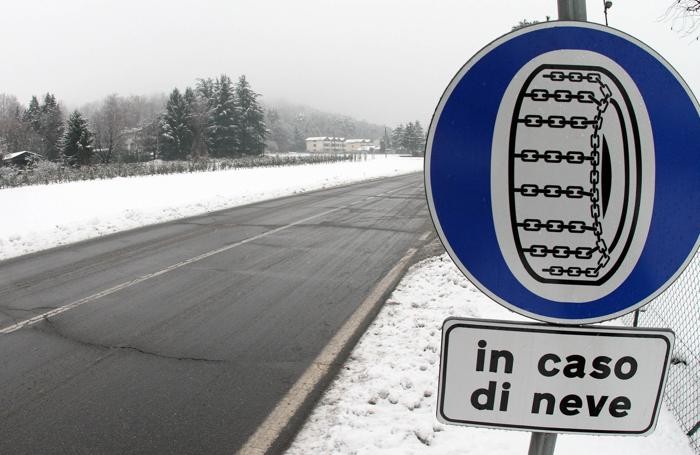
For this reason, iThe first tip is to try to install snow chains before the actual event occurs which will force you to do it in a situation that will almost certainly not be the easiest. You owe it to your safety and sanity to practice installing them in ideal conditions, so that you are ready to get the job done, should the need arise, even during a blizzard. To find out where snow chains are mandatory on board, the pneumaticisottocontrollo.it website can be useful, which lists all the roads in Italy where the ordinance is in force.
Find the right chains
First, it is essential to get a set of snow chains suitable for the tires fitted to your vehicle. You can find the tire specs in the car’s manual or, better yet, right on the side of these. Snow chains are adjustable up to a precise point, which is necessary to create the snug and secure “fit” necessary for their operation. But to do this it is important that you purchase a set suitable for the tires that mounts the vehicle. The sizes of snow chains are usually displayed on the product packaging or in the description if you are more used to shopping online. These they always refer to the dimensions of the tires that will wrap. So buying the right ones is not difficult: just have the size of your tires at hand and look for the chains suitable for that size.
In most cases, you will need to install the chains on two of the wheels of your vehicle. In fact, in the vast majority of cases, a “set of snow chains” includes two. P.For front-wheel drive cars, the tire chains should go to the front tires. And, of course, for rear-wheel drive vehicles, the chains must be fitted to the rear wheels. What if my vehicle has all-wheel drive? In this case it is better to install them on the front tires for more traction on the steering.
How to fit snow chains
Now the fateful moment has come: how to fit snow chains on the wheels? First, iEngage the parking brake and gear and straighten the wheels. Then position yourself next to the wheel on which you will install the chain, unroll the chain well and make sure there are no tangles. Now, patiently, drape the chains over the tires, tucking one end under the front of each wheel and letting the excess drop off the other end. Make sure that the fastening systems (could be hooks, rings, clips, etc.) are facing outward from the tire so that the chains can be attached.
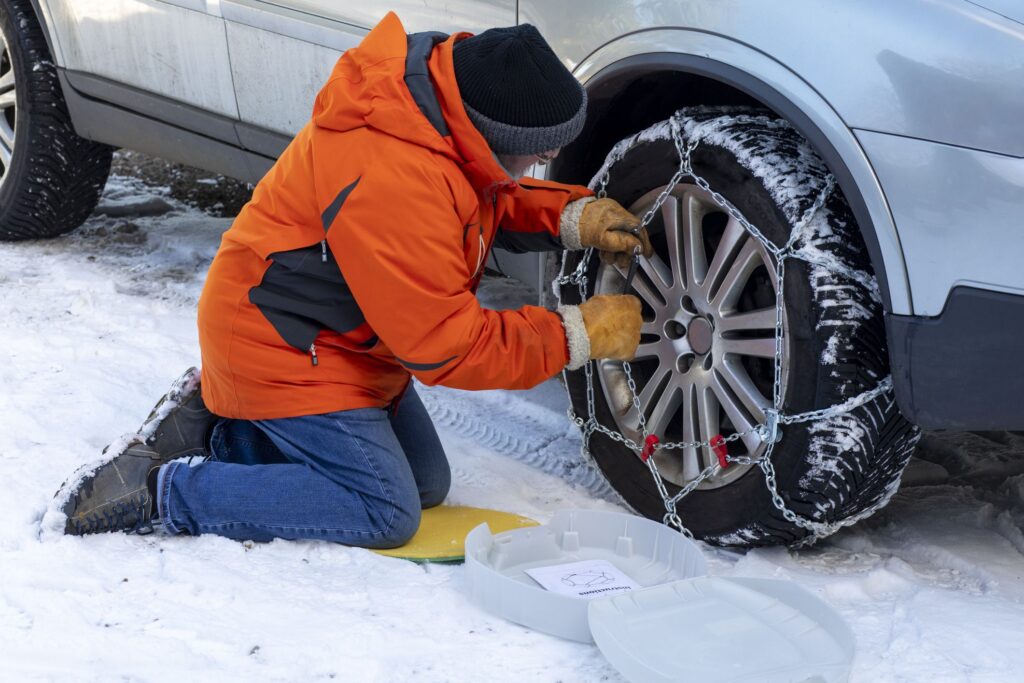
Now get in the car, turn it on, take off the parking brake and drive for less than a meter. that is the space needed to wrap the chain on the portion of the tire that inevitably (touches the ground!) you could not cover. You should now have the tires partially wrapped in their respective chains and with both ends free of the wheel. Put them together and then hook them using the appropriate fastening system, making sure you have the chain as close to the rubber as possible.
Once this is done, we are almost at the end of the editing. Get back in the car and drive for about fifty meters, and be sure to turn the steering wheel a couple of times left and right. Stop the car and get out, and check that the connection point between the ends of the chains is accessible. If it isn’t, advance until it becomes comfortable to reach. It is likely that the chains shifted and loosened during the small trip. Tighten them again as much as possible.
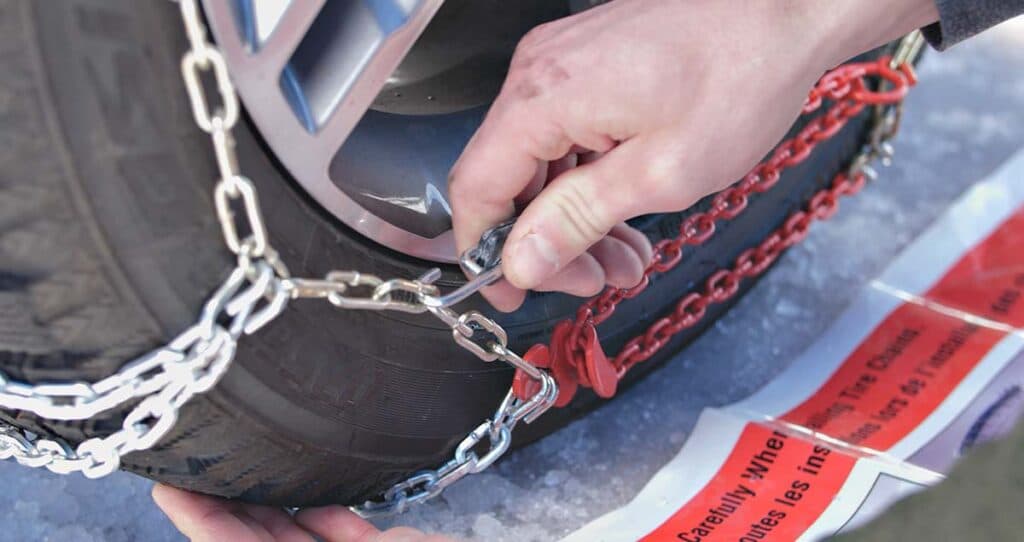
Yes, the snow chains are now mounted. You can continue your journey on the snowy roads, but as always with the utmost caution!
Final tips
A few little tips to finish: remove the chains immediately when you reach a roadway free of snow and ice and you are sure that you will not find these conditions soon on the continuation of the journey. Driving with chains on normal asphalt roads will quickly damage them and also damage tires. And, on dry roads, mounted chains become, paradoxically, dangerous, and can cause you to lose control when braking or steering. This operation is definitely much simpler: remove all the hooks that secure the chains to the wheel, do a few meters in reverse, and you will have your chains ready to be stored in their packaging. When you can remember to wash them with warm water to remove any residual salt, which is usually thrown into the streets when they fill with snow or are frozen.
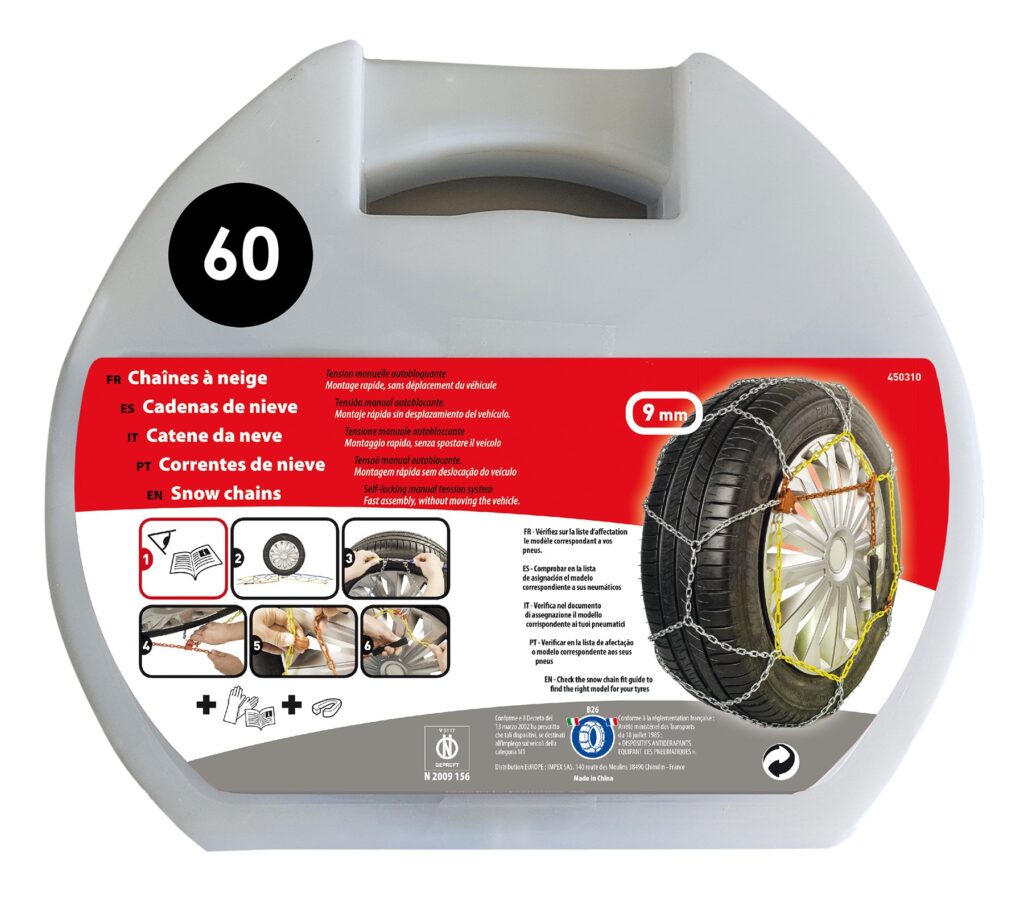
Finally, you will hardly have this article on hand if you are in the middle of a snowstorm and are wondering how to fit snow chains: on the briefcase that contains them, the various steps are usually explained, even with drawings that are quite simple to understand. Look for models where this information is in Italian, because in the cold and frost, the translation from another language other than the mother tongue can be more complicated than when you read an email from your English colleague, in the office, in the heat and maybe with a cup of coffee in hand.






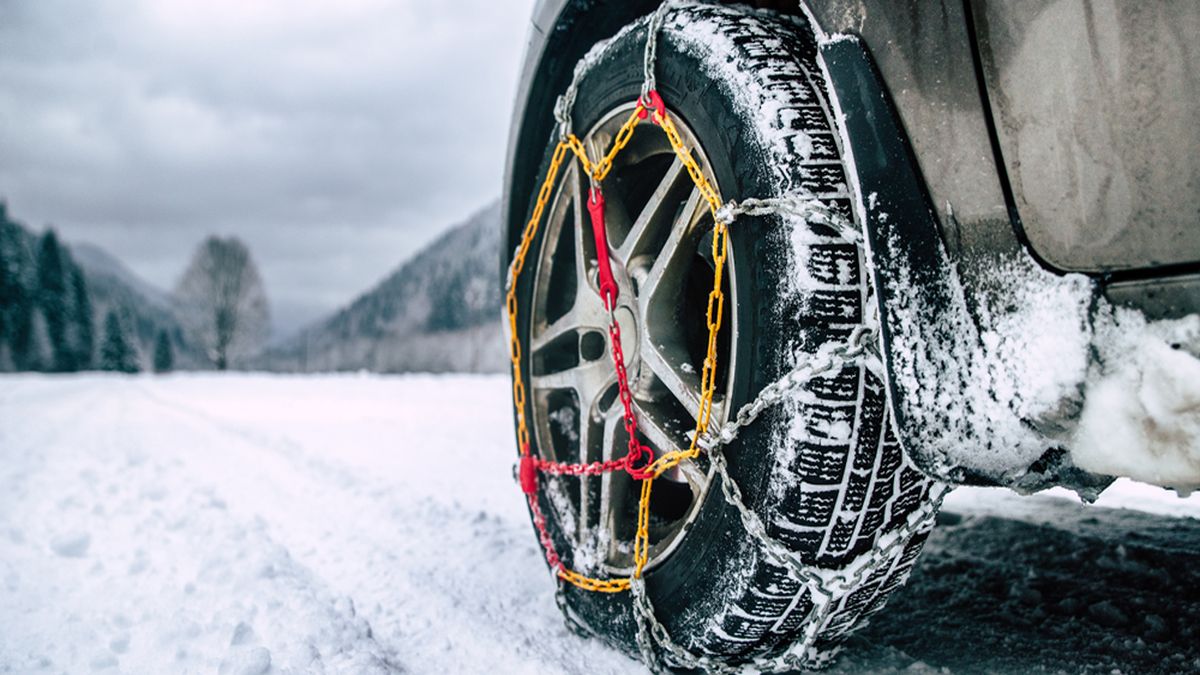









Leave a Reply
View Comments